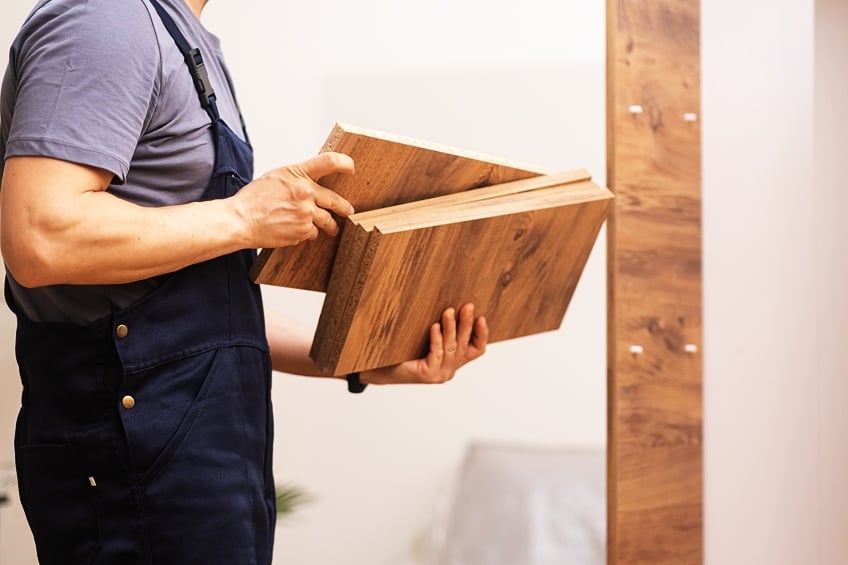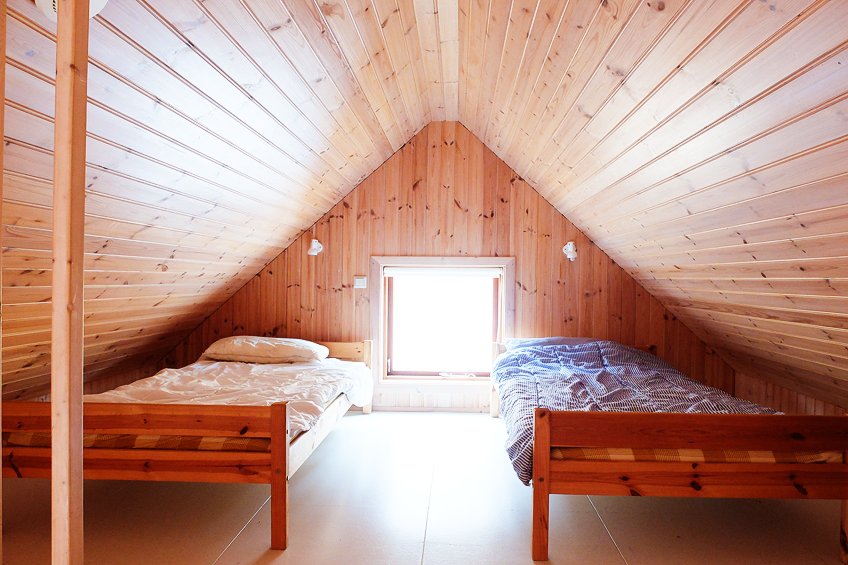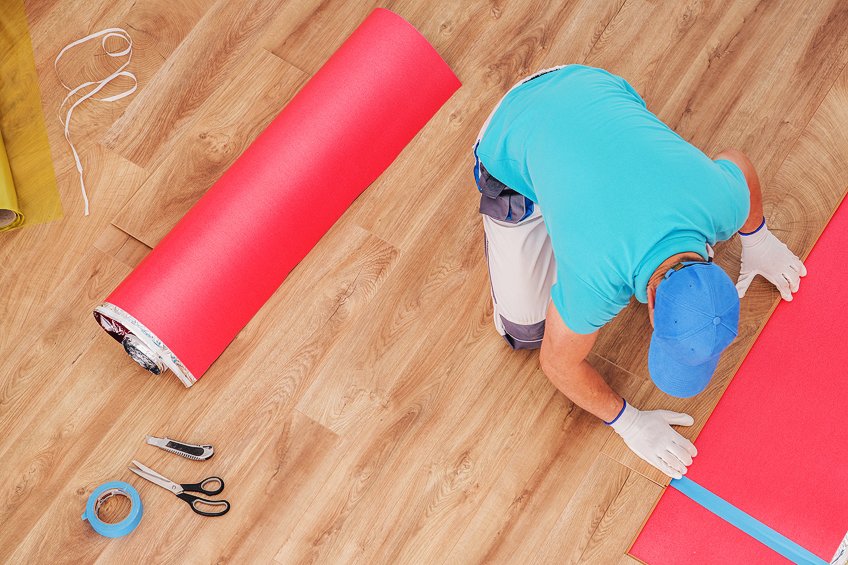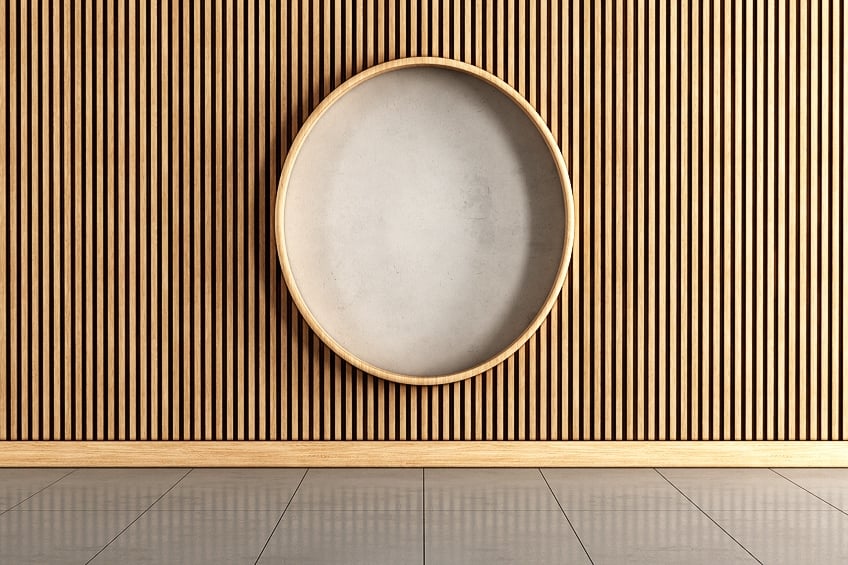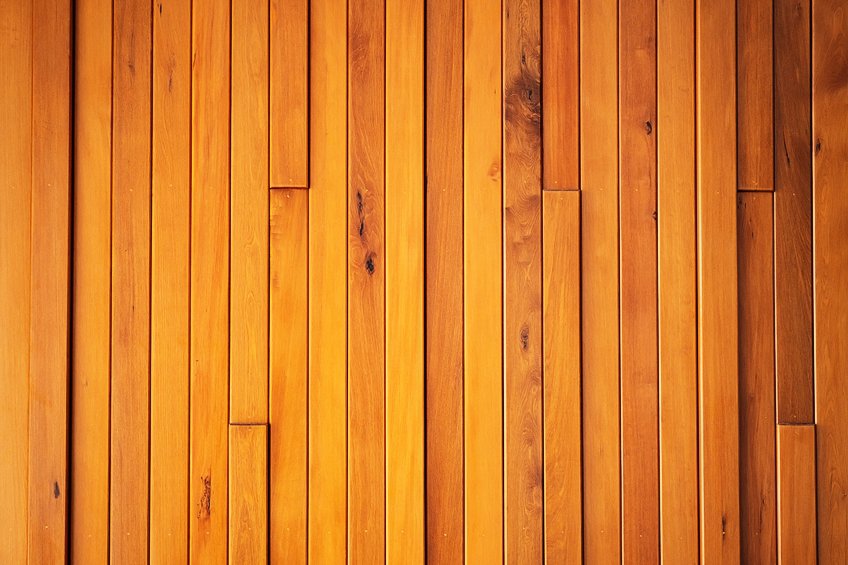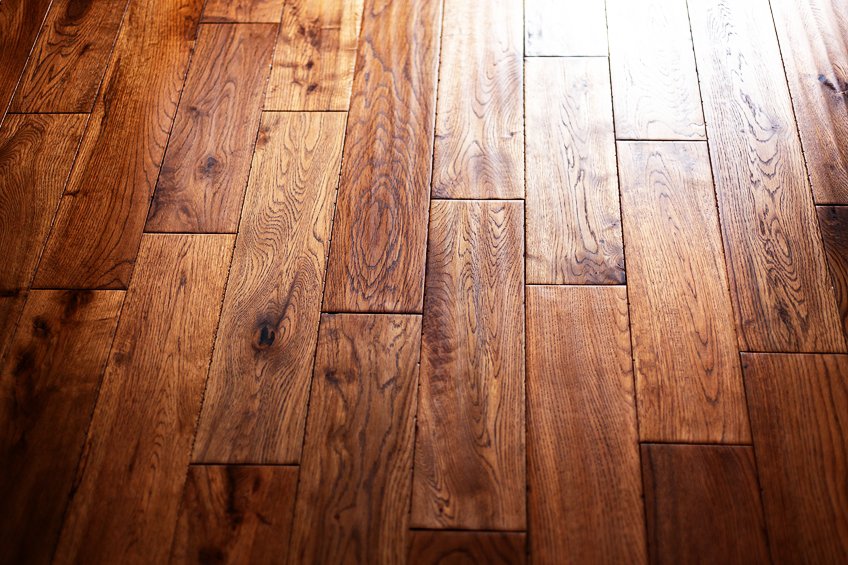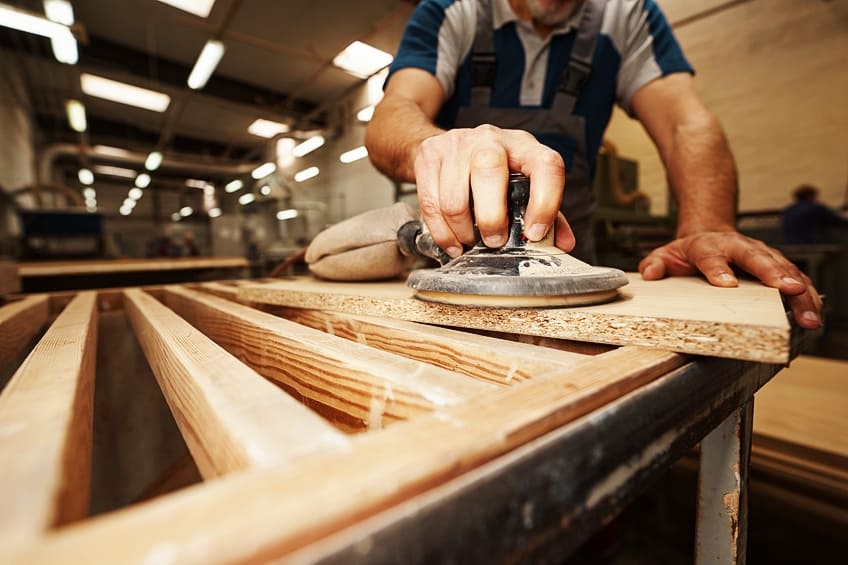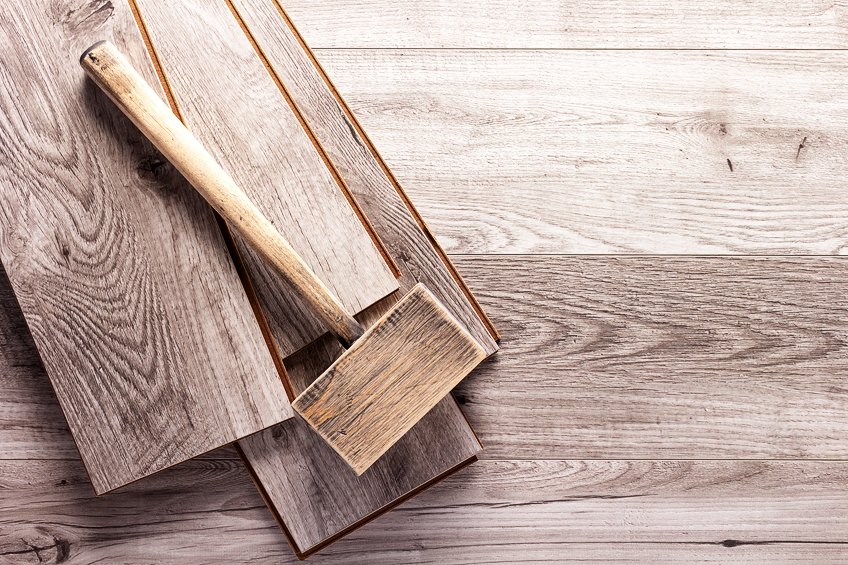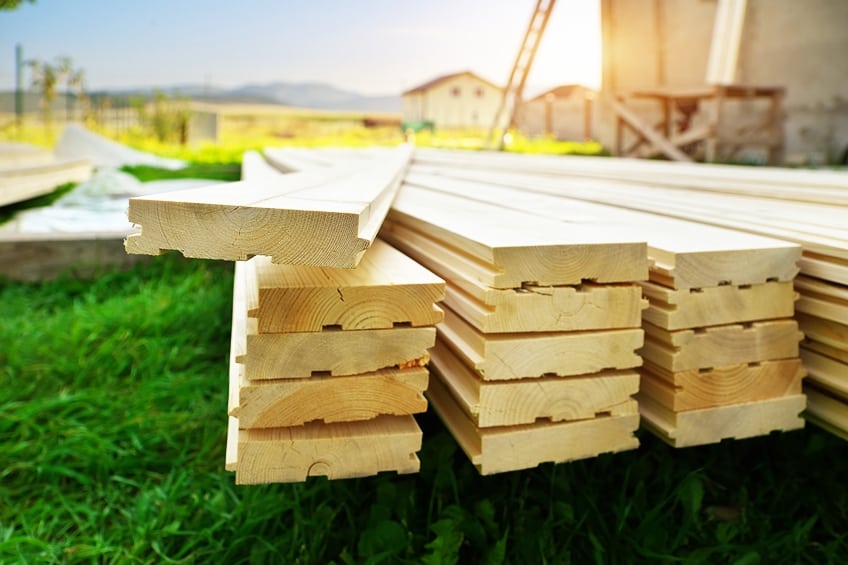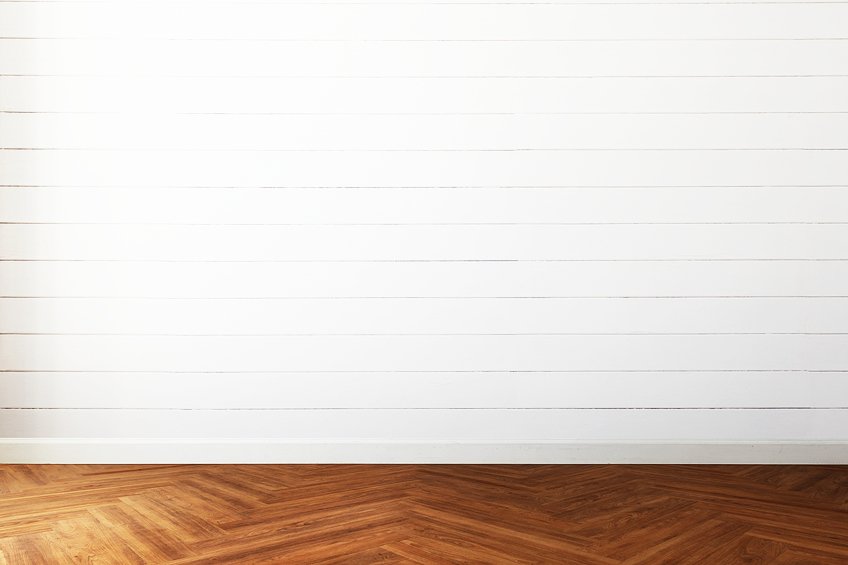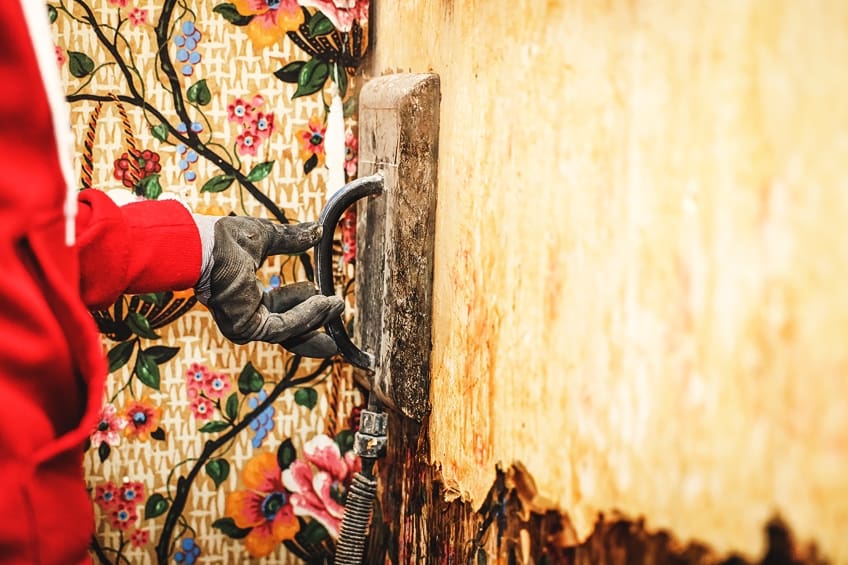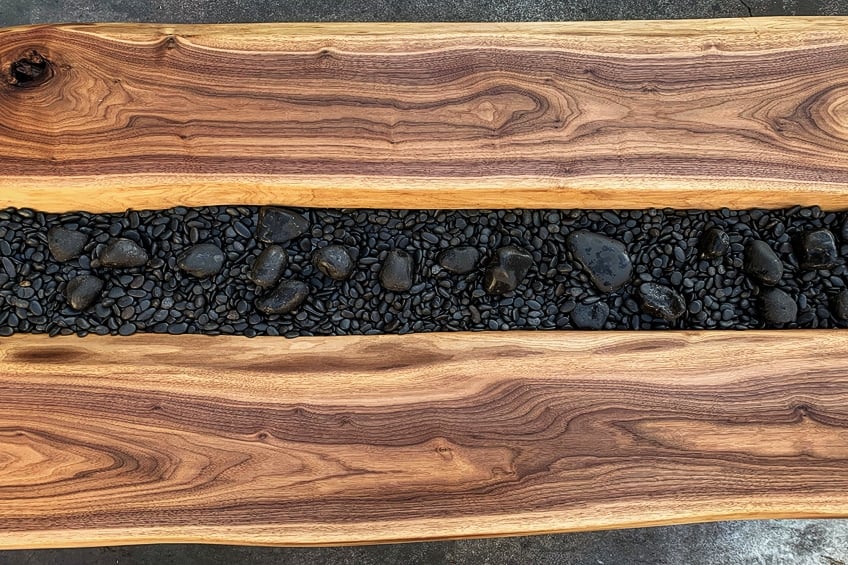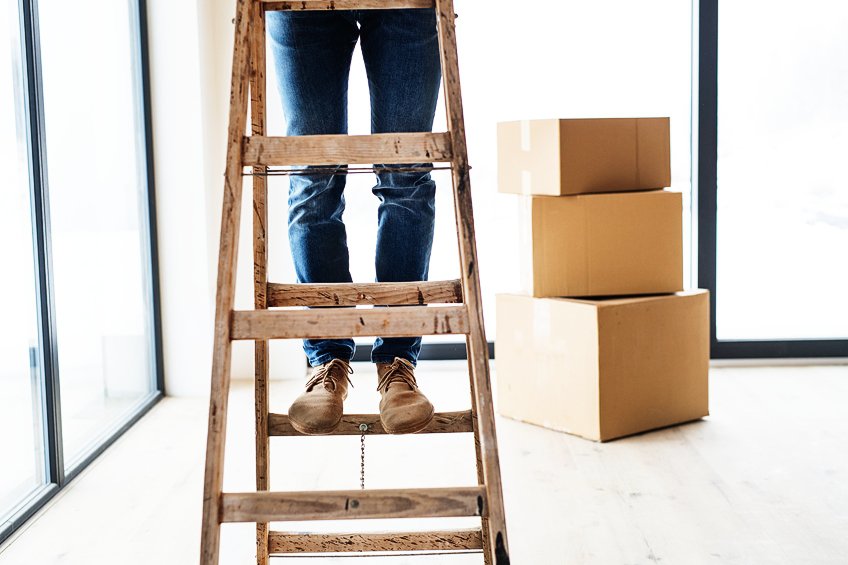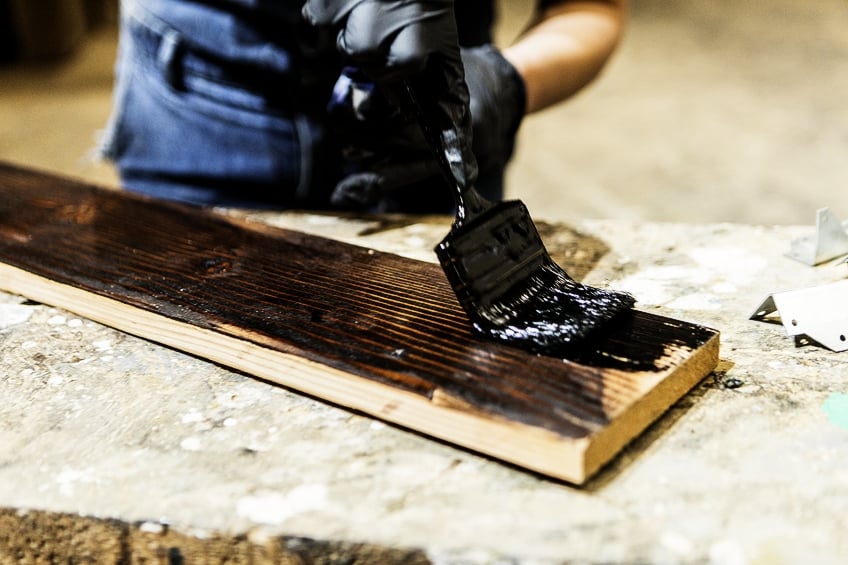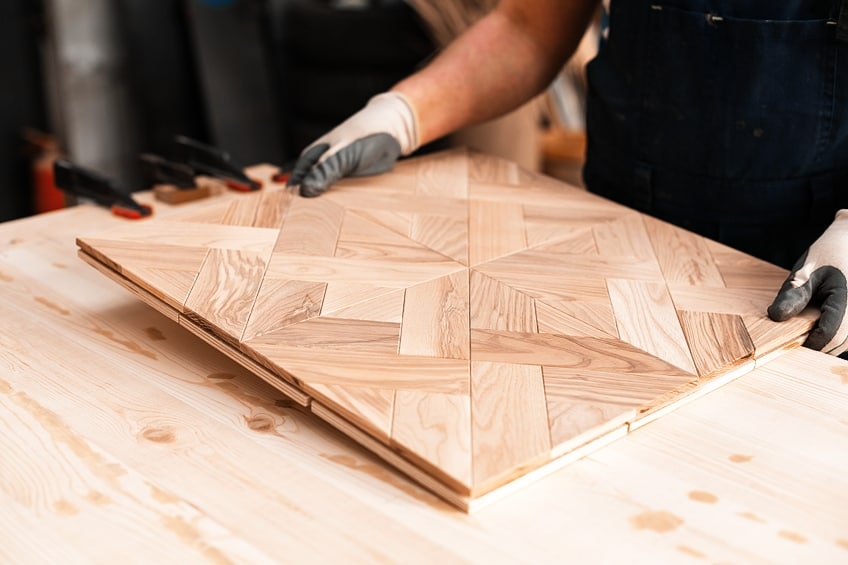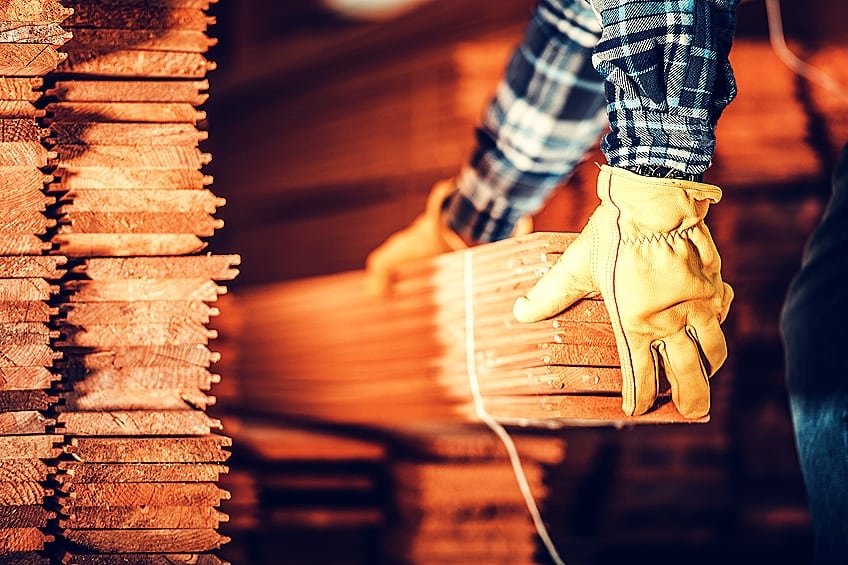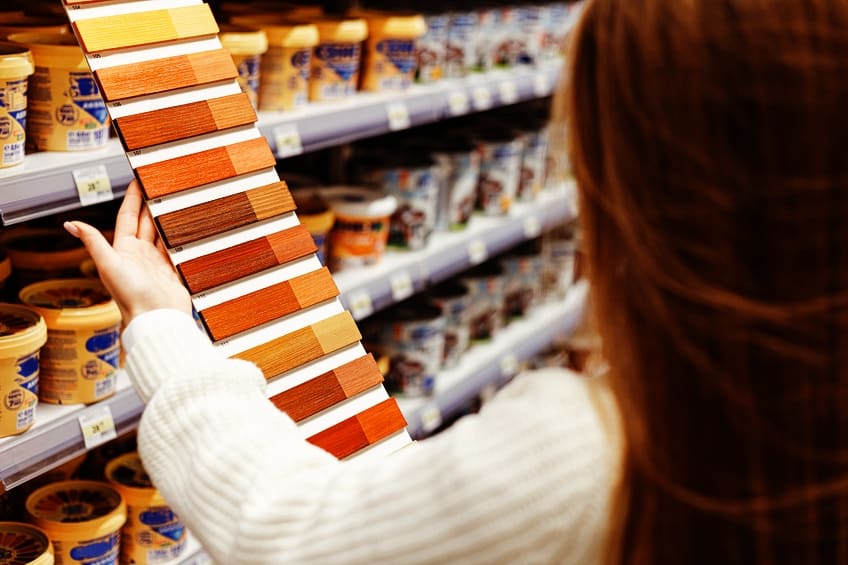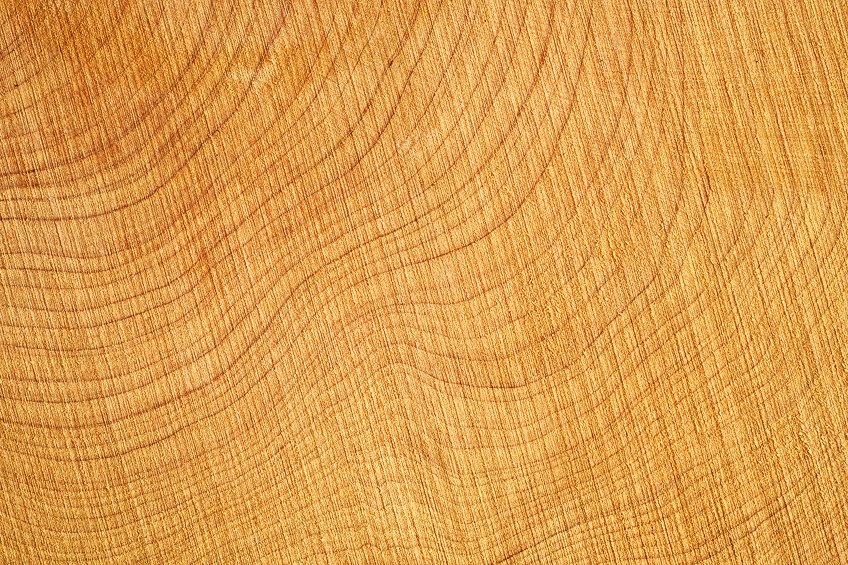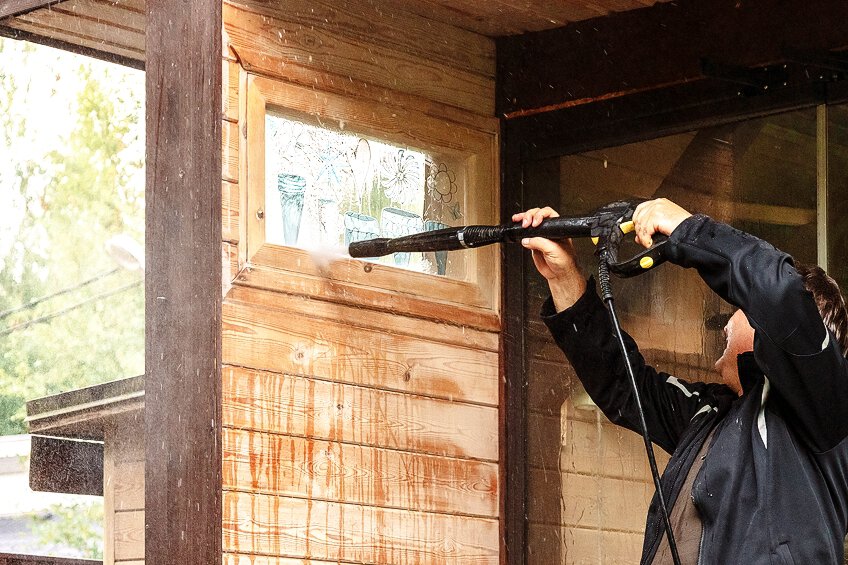Can I Put Wood Flooring on Walls? – Wooden Wall Accents
This post may contain affiliate links. We may earn a small commission from purchases made through them, at no additional cost to you. You help to support resin-expert.com
To some, the concept of applying flooring to walls is outlandish; however, with recent interior design trends leaning toward this type of application, it seems like a good idea. In fact, this could result in a beautiful finish if done correctly. Below, we will be answering the question, “can I put wood flooring on walls?”, alongside every other factor that should be considered to ensure that your project has the best results!
Table of Contents
Understanding Wood Flooring on Walls
When you think about flooring, one of the first things that would come to mind is the general durability that flooring panels or sheets possess. While hardwood floors are more typically utilized, any form of wood may be placed on walls and other surfaces. The advantage of using hardwood on the walls is identical to what it is for the floors: the wood is long-lasting and may be stained, painted, sealed, and coated with protective finishes.
Tiling walls with wood floors may provide an exceptional end product and make the area appear modern or classic. Everything is dependent on the sort of wood you use and the method of installation. However, there is one thing you must consider before thinking about installing wood flooring on your walls:
the foundation upon which the floor is going to be installed must be sturdy.
This is due to the fact that wood flooring must be staggered throughout installation, which means it cannot be installed over an uneven surface if each of the planks cannot be anchored over their whole length. Placing plywood on the wall’s surface before installing the flooring ensures a suitable and solid surface.
When it comes to using flooring on walls, there are more things that need to be considered, but we will dive into that a bit later. For now, it is important to understand that your project will not work if you do not have a good surface to apply the wood.
The Benefits of Wood Flooring on Walls
Apart from the unique aesthetic that you could achieve when installing wood flooring on a wall, there are a range of great benefits to using wood flooring on walls. Below are some of the advantages of using this unique design.
Beautiful Design
A wooden plank offers several design options, meaning that you can be as creative as you like with how you utilize them in your house. They offer a stylish and elegant aesthetic that will render your living areas polished and coordinated.
Furthermore, you may utilize them as the centerpiece in your home, highlighting a modern style with a raw or weathered finish or drawing attention to a more traditional home with pure oak’s crisp lines. This also means that you will be able to enjoy the room more as it brings a new sense of comfort.
Easy Installation
Mounting engineered or any kind of wooden boards on walls can seem to be a challenging process, but it is usually far less complex than it seems. The attractiveness of prefabricated wood flooring is its technological sophistication, which allows you to put planks on surfaces where regular plywood is not recommended.
The best of these floors use glue-free instant-click anchoring methods that make installation as simple and fast as possible. Whether you would like to apply hardwood on walls or if you simply want to have a unique grain pattern to look at, the process is very simple to complete.
It Makes a Huge Difference
To maximize the return of the natural resources employed, wood flooring uses a dense upper layer for the boards, reinforced by a foundation layer similar to a laminated floor panel. Furthermore, these boards are lightweight, practical, natural, and constructed from solid woods such as maple, birch, and oak.
This sort of flooring panel is not only well-made, but it is also a beautiful method to bring the best of nature into your home. Considering the fact that these wall options are made from a variety of hardwoods, the various grain patterns in all engineered laminated planks set them apart. This creates the illusion of optical warmth.
Can I Put Wood Flooring on Walls?
Wood flooring can also be utilized on the walls to create eye-catching accents in your home. This is a fresh and innovative trend and the richness, individuality, and juxtaposition given by a hardwood tile or panel flooring may enhance any area.
It may also appeal to DIY aficionados due to how easy it is to put up. It is highly water-resistant and, in certain circumstances, impenetrable, as well as simple to care for. So, if you are asking yourself, “Can I put wood flooring on walls?”. You most certainly can, but there is more that you will need to know.
Types of Wood Flooring
Do not mix up the kind of wood flooring with the type or variation of wood that defines the color and design of the floor. Hardwood floor kinds refer to how the substance is assembled, such as whether it is vinyl, wood composite paired with wood veneer, synthetic wood, or genuine hardwood. Hardwood flooring offers unrivaled natural beauty and complements any type of classic or modern decor.
Solid Wood Flooring
Solid hardwood flooring is constructed of solid wood. Each solid hardwood board is constructed from an individual piece of hardwood that is approximately 3/4-inch thick. It is commonly installed with tongue-and-groove. Every type of wood has a hardness score that reflects how quickly it may be damaged, scratched, worn, or dented as a result of normal wear and tear.
When it comes to the cost, you can expect to pay around $7 per square foot. However, this also depends on the type of wood that is used. Additionally, there are a range of benefits that come with using solid wood flooring, most notably, it raises the property value.
Engineered Wood Flooring
This type of wood flooring provides a flexible and long-lasting flooring solution. Each floorboard is made up of three to four layers of wood that have been bonded at right angles to form a half-inch thick plank. On top, there is a 1/25-inch genuine wood veneer.
This is a slightly cheaper option compared to solid wood, with prices ranging from $2.50 to $10 per square foot. However, much like the solid wood option, the type of wood that is used and the style will determine how much it would cost. Engineered wood flooring is much more resistant to heat and moisture, but it is slightly harder to install when compared to click-lock boards.
Laminate Wood Flooring
This type of flooring is a class of multi-layer artificial flooring products that is laminated together. This type of flooring is a finish that looks like wood and has a photographic appliqué layer behind a transparent protection layer.
The imitation wood feel of laminate flooring implies that you receive all of the aesthetic advantages associated with wood without the effort of care and at a lower cost. However, even the most expensive laminate flooring will not look or feel precisely like real wood.
Comparison of Each Type of Wall Application
Naturally, there are a range of factors that will need to be considered before choosing the type of flooring for your wall. The walls are a vertical surface and unlike flooring, where you simply set the planks, the bond between them must be stronger as your wall rises. As a result, you must have a strategy for how you will build the planks and determine which mounting style to utilize. Below are some of the most important factors to consider before you can begin using flooring on walls.
Tongue and Groove vs. Planks
Tongue and groove flooring is a type of wood flooring that is held together by tongues and grooves. Although it might be difficult to apply on the floor, it must be done thoroughly on the walls.
Putting grooves together takes time. Leave an eight-inch space for sealants or screws. Grooves are narrower than the wooden board and, if rushed, might shatter.
Tongue and groove are both present and it is quite resistant to vibration and will be difficult to disassemble.
Meanwhile, screws and nails are required to keep planks from slipping. It is superior since it is much easier to set up. When properly bonded, it is equally as strong and solid as the tongue and groove joining system.
Mounting
There are several mounting options. And some perform better on specific buildings, patterns, and wood varieties. The most popular option is to glue planks firmly to the wall, which works for all tastes.
We have seen folks do it on plywood first, then connect it to the wall as a complete. Thicker boards may require nails or screws to properly attach, but thin and light planks can be used to install tiny constructions such as wall kitchen cabinets. Avoid installing it above wallpaper or close to sinks or other water-prone locations. Wood, in most circumstances, will not function and will quickly detach.
Structure
To make a compact wall, stack your boards horizontally like bricks. Long vertical boards are another option. Put your wooden boards anywhere you choose. Ultimately, it is the design that counts, and you are bound to discover a way to render it more durable.
Height
Gravity is a huge factor here. After you’ve determined the highest point of your wall, decide what strength your glue should be. Heavier hardwoods might call for screws to attach securely, and you should be cautious if installation on a wall has an angle of fewer than 90 degrees, particularly on ceilings.
Comparing Different Types of Wood Flooring
Naturally, each type of wood flooring has its pros and cons, and depending on the characteristics that you are looking for, will essentially determine the type of wood that you will be using. Ultimately, we have provided a table that will help you decide on what will be best for you.
| Type of Flooring | Pros | Cons |
| Laminate Flooring |
|
|
| Engineered Wood Flooring |
|
|
| Solid Wood Flooring |
|
|
Preparation and Installation
Preparing the surface and installing the wood flooring is a simple process if you have all of the tools that are needed. Below you will find a list of all of the materials and tools that you will need to ensure that this project goes smoothly.
- Helmet
- Ladder
- Clips
- Wood glue
- Drill
- Screws
- Screw gun
- Chalk
- Measuring tool kit
- Pry bar
- Caulking gun
- Tapping block
- Circular saw
- Wood floor panels
- Wood filler
Preparing the Wall Surface
You are free to paint the walls any way you see appropriate. However, it is not required. Painting the walls provides additional protection and wood flooring will also stick easier if the drywall is properly coated. It is advised to remove any wallpaper before applying the wood flooring as this could make it very difficult for the wood to stick.
Choosing the Right Adhesive
We would recommend using extra-strength wood glue to hold the wooden floor panels in place before screwing them into the wall. However, glue is not enough to hold these panels and if you are using a strong glue, be sure to keep your windows open to allow adequate airflow through the area.
Installing Wood Flooring on Walls
When starting a project, always begin with the hardest and inaccessible location. If necessary, use a ladder to put the boards on the ceiling. Operating on the ceiling is strenuous and it can be very dangerous, so wear a helmet.
It makes no difference whether you put the boards perpendicular or parallel to the joists. The crucial thing is that you use screws to secure the joists to your ceiling. But remember to mark the joists ahead of time. Allow enough space between grooves for it to move easily on the tongue, but not too much. When you get to the border, cut your board, leaving a 3/4-inch gap, and apply wood glue to the edges.
Finishing Touches
The majority of wood offered is pre-finished. Tung oil may be used to bring out the inherent beauty of your wood panel while also providing exterior preservation. The wood grain is the nicest aspect of a wood wall and ceiling, and it would not make any sense to paint it completely.
Both polyurethane and varnish are capable of safeguarding your wood. Even though they dry quickly, tung oil penetrates wood fibers deeper. On wood surfaces, tung oil does not produce a protective barrier. Instead, it fills the crevices inside and pulls moisture out to keep degradation at bay.
Design Considerations
Choosing a design is often the most enjoyable part of the process. While you will need to consider the area and everything else that comes with it, it is quite easy to come to a conclusion if you are choosing a classic design as there are very few, if any, vibrant wood styles.
Choosing the Right Wood Species
Some of the most popular wood species for wood flooring on walls include ash, cherry, beech, walnut, and oak. The sort of wood that you select will determine the appearance, general maintenance, and durability.
Color Options
Unless you intend on staining and finishing the wood yourself, there are often a variety of color options when it comes to choosing wood. Each type of wood has a unique color that can range from deep shades of red to pale beige tones. Apart from the different characteristics that each type of wood has to offer, the wood grain and colors are important factors to consider.
Pattern Options
As we have mentioned before, the patterns or wood grain will vary from one piece of wood to the next. This means that you will have a unique design in your home and one that has been created by nature. Certain woods will have distinct characteristics such as knots and darker grain patterns.
Design Tips and Tricks
In your house, wood generates a pattern, but it is so faint that it readily blends into the background. Light wood flooring provides a sharp and attractive aesthetic in spaces that do not get a lot of ambient light.
For more dramatic floors, choose dark oak alternatives that have been treated to bring out a greater grain look.
Maintenance
Maintaining wood is something that you will need to be on top of, particularly with outdoor surfaces. With indoor projects, it is much easier, more so if you have stained or finished the surface. Nevertheless, cleaning, taking care of scuffs or scratches, and preventing damage.
Cleaning Wood Flooring on Walls
Cleaning wood is a simple process that can easily be done with warm water and mild soap. For stubborn stains, you can take the organic route by mixing some olive oil and vinegar to create a cleaning solution that is great for removing stains that cannot be removed with soap and water. If you would like to remove dust then a dry lint-free cloth will work wonders.
Preventing Damage
Preventing damage is something that is difficult to do, but there are a few things that you can do to prevent scratching your wood. Start by keeping the area clear of anything that has a rough or sharp edge that could scratch it.
A general rule of thumb is to keep anything away from the wood that is harder.
Repairing Scratches and Scuffs
Depending on the type of wood that you are using, whether it is softwood or hardwood on walls, you can easily repair scuffs and scratches with light sanding or wood filler. However, you could end up with a wood panel that looks different from the rest, which could be a problem if you are very particular about the appearance.
Wood flooring does not have to be confined to floors, as these beautiful panels can be used to create a unique aesthetic for nearly any part of your home. The process can be a bit expensive and quite challenging for the novice DIY enthusiast, but our guide ensures that you are able to get the best results. We wish you luck on your project!
Frequently Asked Questions
Is It Possible for Me to Place Wood Flooring on Walls in Any Room?
This depends on the type of wood flooring that you are using, as some of them are better suited for areas with moisture, whereas others are not.
What Is the Best Type of Wood Flooring for a Bathroom?
We would suggest that you use wood laminate, as it is a synthetic blend that is resistant to moisture.
Can I Repair Wood Flooring if It Cracks?
Yes, you can, but the repair will stand out unless you are extremely meticulous with the repair process.


